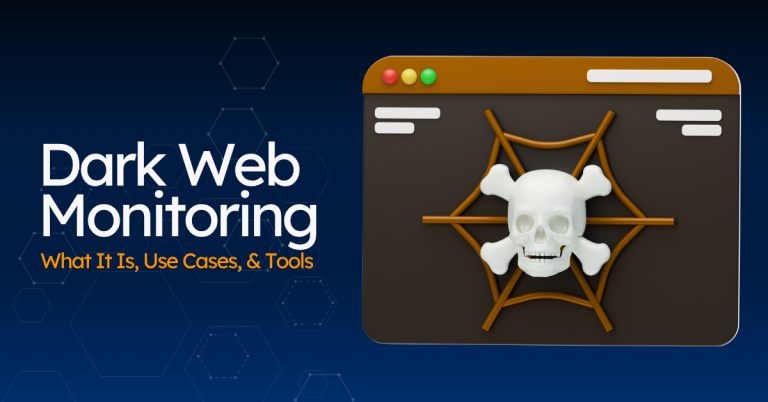In today’s digital world, personal and business data are valuable targets for cybercriminals. From stolen credit card numbers to leaked login credentials, this sensitive information often ends up on the dark web — a hidden part of the internet not indexed by search engines. That’s where dark web monitoring comes in. It’s a crucial security practice designed to detect if your private data has been exposed and prevent potential misuse.
What is the Dark Web?
The dark web is a portion of the internet accessible only through specialized browsers like Tor. Unlike the surface web (Google, social media, websites) or the deep web (private databases, medical records, online banking), the dark web is intentionally hidden.
It’s often used for illegal activities, such as:
- Selling stolen credit card data
- Leaking login credentials
- Distributing malware and ransomware
- Sharing personal identity information (PII)
This makes it a major concern for individuals and organizations that want to keep their data safe.
What is Dark Web Monitoring?
Dark web monitoring is a cybersecurity process that continuously scans dark web forums, marketplaces, and data dumps to detect whether sensitive information belonging to you, your business, or your employees is exposed.
The process involves:
- Data Collection – Monitoring stolen databases, marketplaces, and forums.
- Threat Detection – Identifying personal data such as email addresses, usernames, or credit card numbers.
- Alerts – Notifying users when compromised data is found.
- Remediation – Taking steps to secure accounts and prevent further damage.
Why is Dark Web Monitoring Important?
- Protects Personal Identity
If your Social Security number, bank details, or medical records are leaked, criminals can commit fraud in your name. Monitoring helps detect and stop misuse early.
- Prevents Financial Fraud
Credit card details are a prime target for hackers. Monitoring alerts you when your payment information is exposed.
- Strengthens Business Security
For companies, leaked employee logins can lead to massive data breaches. Dark web monitoring protects corporate data and reputation.
- Early Warning System
Instead of finding out after an attack, monitoring acts as an early detection tool so you can respond immediately.
How Does Dark Web Monitoring Work?
Dark web monitoring tools typically:
- Use AI and automation to scan millions of sites, forums, and marketplaces.
- Compare exposed data with databases of known leaks.
- Provide real-time alerts when a match is found.
- Suggest actions like changing passwords, enabling MFA (multi-factor authentication), or freezing accounts.
Who Needs Dark Web Monitoring?
- Individuals who want to protect personal information like credit cards, email accounts, or social security numbers.
- Businesses that handle sensitive customer or employee data.
- Financial Institutions that must protect accounts against fraud.
- Healthcare Organizations dealing with confidential patient data.
Best Practices for Dark Web Protection
- Use Strong, Unique Passwords for every account.
- Enable Two-Factor Authentication (2FA) wherever possible.
- Regularly Monitor Your Accounts for unusual activity.
- Subscribe to a Dark Web Monitoring Service like Norton, IdentityForce, or Experian.
- Educate Employees about phishing and data security.
Top Dark Web Monitoring Services
Some trusted services include:
- Aura – Identity theft protection with real-time dark web alerts.
- Norton 360 with LifeLock – Combines antivirus and dark web monitoring.
- Have I Been Pwned? – Free tool to check if your email has been compromised.
- SpyCloud – Used by enterprises to protect employee and customer accounts.
Final Thoughts
Cybercrime is growing rapidly, and the dark web continues to fuel stolen data markets. Dark web monitoring is no longer optional — it’s essential for both individuals and businesses. By actively monitoring for leaked information, you can respond quickly, prevent financial loss, and protect your digital identity.
If you want to stay a step ahead of hackers, investing in a dark web monitoring solution should be a top priority in your cybersecurity strategy.
